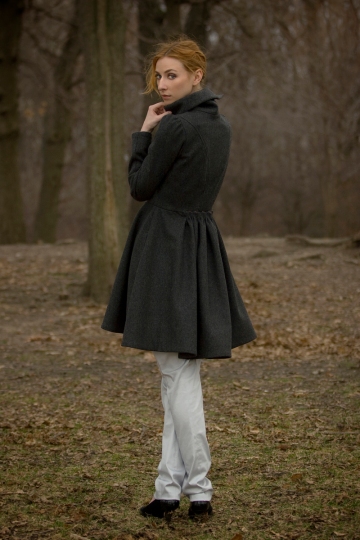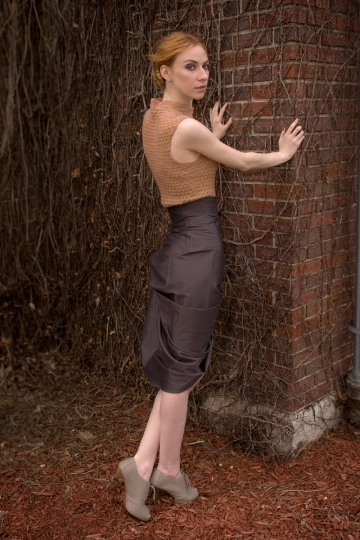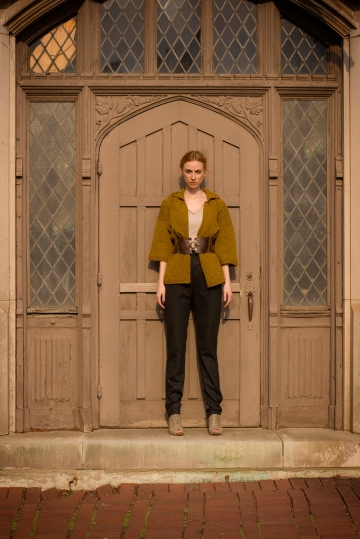I still have things to say about pieces from my collection! Maybe it isn’t so strange – after having spent so much time, thought, and energy into it, I want to share all the little touches and details!
The top picture is from my cellphone, while I was tracing my print-pattern, getting ready to burn it to a silk screen. The motif is based on a cross-section of the heather flower, which I then repeated ten times to make a stylized flower (or is it a snow flake?). That design was “burned” onto a silk mesh screen using photo sensitive emulsion, and a big light table. Once that screen was made, I could use it to print my design onto fabric!
I took a weekend workshop through school to learn silk screen printing, and I’m really glad I had the chance to. I only needed 1/4 yard of printed fabric for the belt, but with the lab fee, buying the screen and the fabric paint, it was probably the most expensive 1/4 yard in my collection! There is something so satisfying though, in being able to design and “produce” your own print – so fun!
Some non-belt-related in-progress pictures! The skirt on the left is the draped skirt paired with the pale pink knit top, and the top on the right is the one with the cartridge pleats on the shoulders. At this point I was trying to get the length right on the skirt, and to get the distribution of gathers right on the blouse (as you can see, I ended up having the pleats on the shoulders only). I always think it’s fun to see how designs evolve, and to see things before they’re entirely done.
Another work in progress, I guess! I ended up buying an entire hide for the leather belt that I wanted to make – I just couldn’t find a smaller piece that I liked as much as this one! This is a gorgeous, wax-finished leather, and I really like the variations in color and texture that you can see.
I got the buckles from a friend, and it actually reminds me a lot of traditional Norwegian knit sweaters! It’s a nice nod to the origins of the designs, I think. To connect the pieces of leather I used bias strips of dupioni silk in a yellowish-green, and it adds a nice, and unexpected, little flash of color up close.
Both belts really were little pet projects for me. They were physically smaller, which meant that the construction generally was a lot faster than most of the other garments! At the same time, I put a lot of effort into the materials – the printing of the fabric, the seam-lines, interfacing with crinoline to add some stiffness, lining with colorful fabrics… But it was all because I really enjoyed it!
* * *
That concludes the posts about the collection! Thanks for your encouraging comments and interest!







































